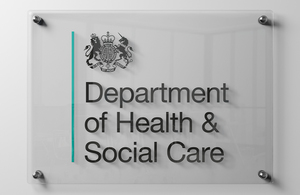More help to follow a healthy diet – front of pack food labelling consultation launched
Keeping track of what you eat and choosing healthier foods could be made easier thanks to a UK-wide consultation launched today by Health Secretary…

Keeping track of what you eat and choosing healthier foods could be made easier thanks to a UK-wide consultation launched today by Health Secretary Andrew Lansley.
UK health ministers want to see all food manufacturers and retailers use the same system to show - on the front of packs - how much fat, salt and sugar, and how many calories are in their products.
Around 80 per cent of food products sold in the UK already have some form of front-of-pack-labelling. But different retailers and manufacturers use different ways of labelling which can be confusing for consumers.
Some use labels showing Guidelines Daily Amount (% GDA), some use traffic light colour coding that highlights high fat sugar and salt content, and some use both. Research shows that a consistent presentation, combining information, used across all products, would make it easier for consumers to compare the nutritional information provided on the food they buy.
If the biggest seven supermarkets used the same labelling for their own brand foods, it would cover around 50 per cent of the food sold in the UK and encourage others to adopt the scheme.
Health Secretary Andrew Lansley said:
“Being overweight and having an unhealthy diet can lead to serious illnesses such as cancer and type 2 diabetes. We must do everything we can to help people make healthier choices.
“Offering a single nutrition labelling system makes common sense, it would help us all to make healthier choices and keep track of what we eat. Making even small changes to our diet can have a major impact on our health. Cutting our average salt intake by 1.6 grams a day would prevent over 10,000 premature deaths a year.
“Initiatives like the Responsibility Deal are already showing what can be achieved if we work in partnership with industry. For example, customers who buy 70 per cent of fast food and takeaways sold on the high street can see from the menu how many calories are in their meals and half the high street has committed to cutting salt in household staples.”
New EU regulations on food labelling were introduced at the end of last year that require manufacturers and retailers to make many changes to their food labels. While providing front of pack information is voluntary under the regulation, every company that does so has to provide information about calories alone, or calories plus the amount of fats, saturated fats, sugars and salt.
The UK has always led the way in providing consumers will more information. Consulting now should help industry to identify a common scheme, which will bring benefits to consumers.
Notes to editors
For further information, please contact the Department of Heath press office on 020 7210 5221.
The new EC Regulation 1169/2011 allows a good degree of flexibility in how Front of Pack nutrition information may be presented.
It must include either
- energy value alone; or
- energy value plus amounts of fat, saturates, sugars and salt
and can be expressed per portion or per 100g, as sold or as consumed ( if adequate cooking instructions are given, and with or with out percentage of the reference nutrient intakes (GDAs).
In addition the nutrients can be presented using a graphical scheme (i.e. using graphical forms or symbols) and/or to be expressed using alternative forms of expression. For example, in the UK traffic light colour coding systems and “High/Medium/Low” (HML) text are commonly used to present front of pack nutrition information in summary form.
However, if additional forms of expression and/or presentation are used, they must meet all the requirements listed in the Regulations. They must, for example, be based on sound and scientifically valid consumer research and not mislead the consumer. They must also be supported by scientifically valid evidence of understanding of such forms of expression or presentation by the average consumer.